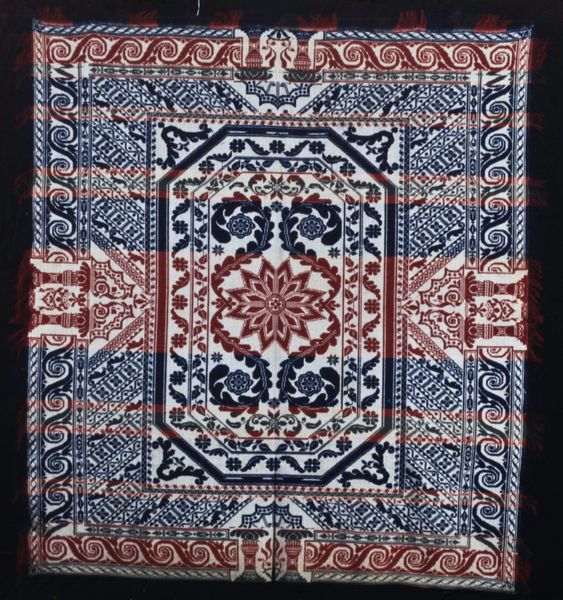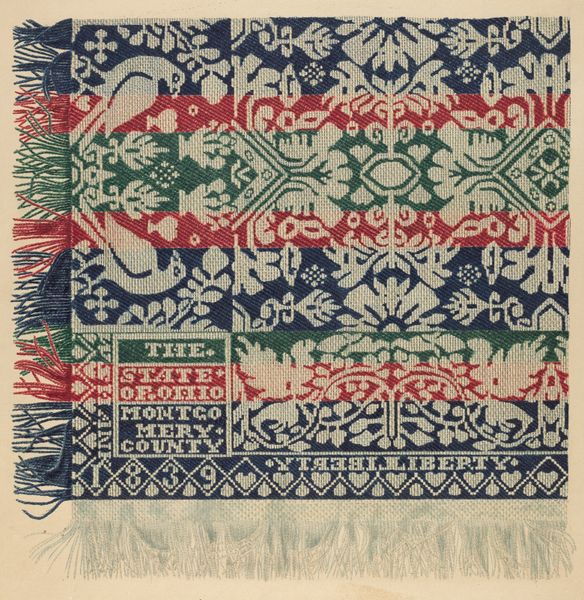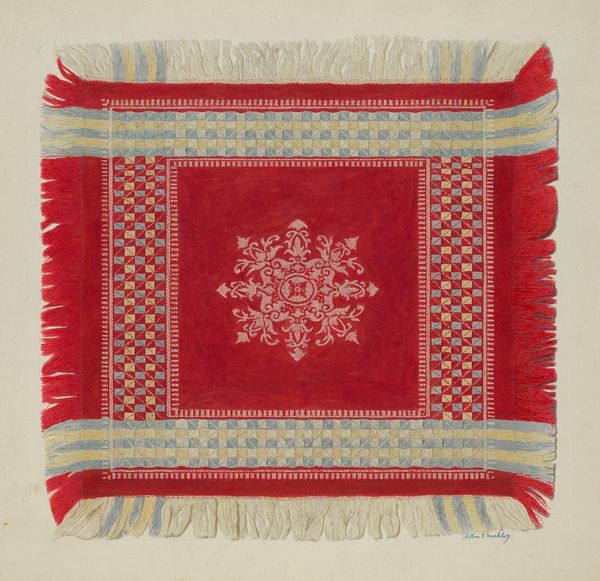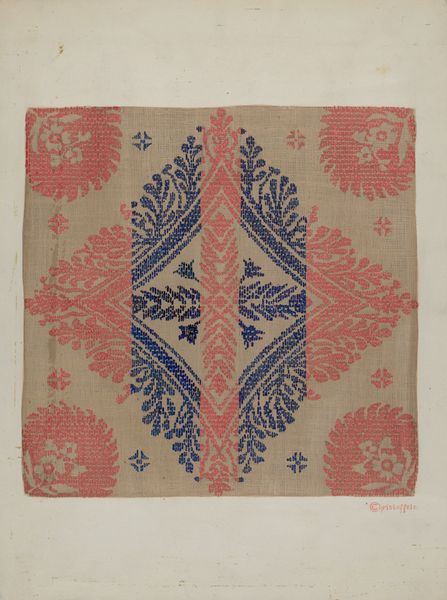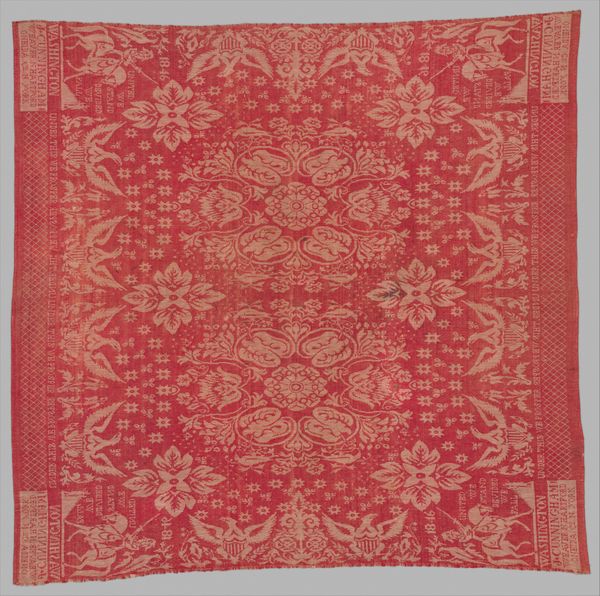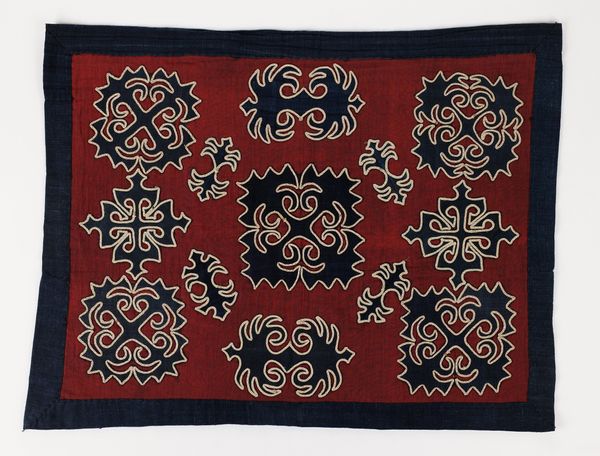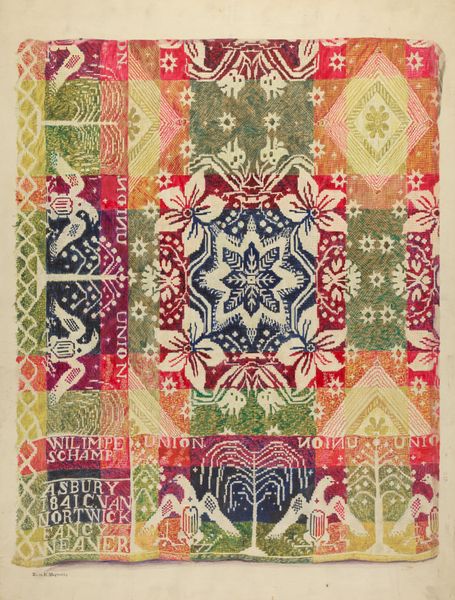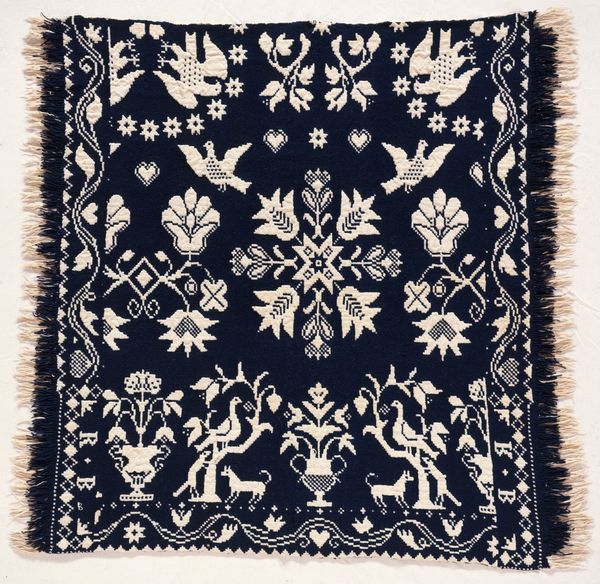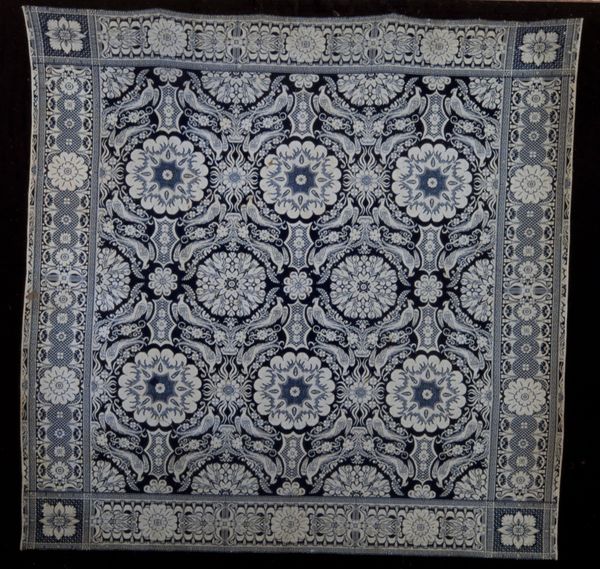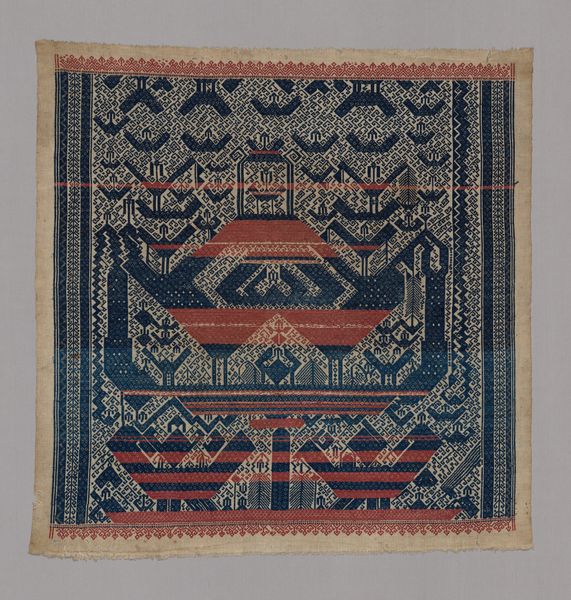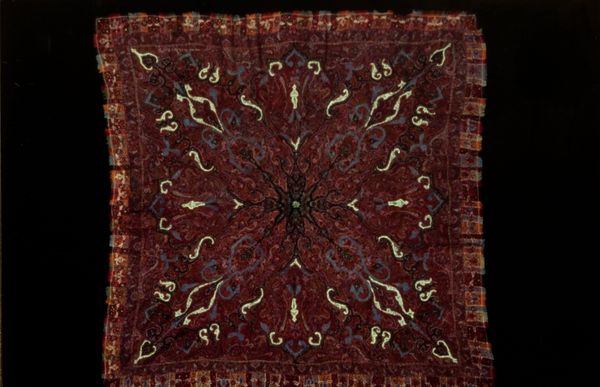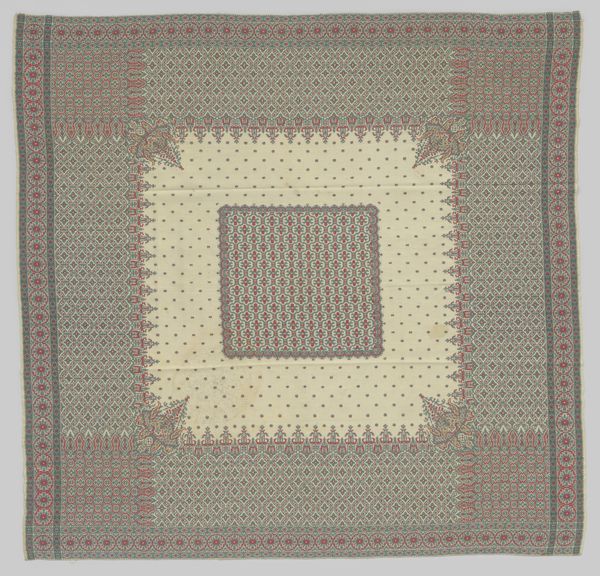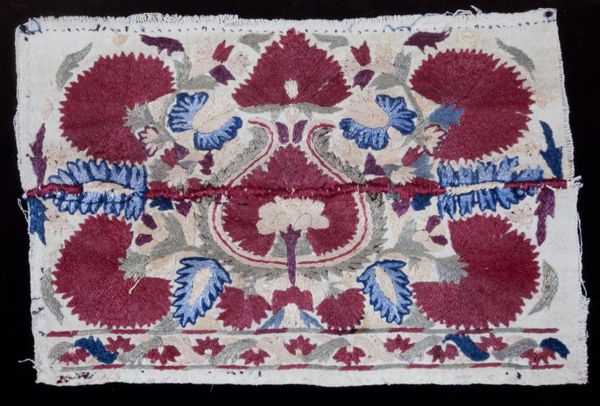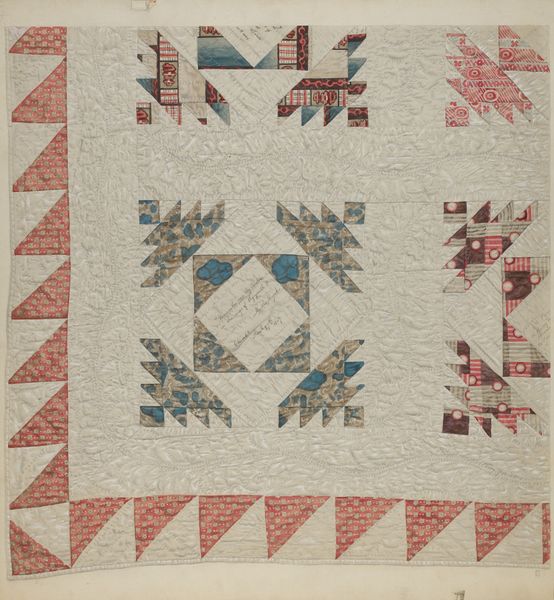
fibre-art, weaving, textile
#
fibre-art
#
weaving
#
textile
#
geometric pattern
#
geometric
#
decorative-art
Dimensions: 87 x 81 in. (220.98 x 205.74 cm)
Copyright: Public Domain
This coverlet was made by William Ney, sometime in the 19th century. It's a textile, woven with wool and cotton using a Jacquard loom. Looking at the image, you see how the coverlet’s pattern is highly symmetrical, with geometric and floral motifs repeated across its surface. The color palette of red, white, and blue speaks to a particular moment in American history. Coverlets such as this were a staple of middle-class households and their designs reflected the cultural values and technological capabilities of the era. The jacquard loom allowed for complex patterns to be woven relatively quickly, making decorative textiles more accessible. The coverlet reflects the social structures of its time, when textile production was shifting from home-based craft to industrial manufacture. These textiles were often produced by skilled weavers, many of whom were working in small workshops. To understand these objects better, researchers often consult historical records, such as census data, trade publications, and genealogical information to trace the movement of people, materials and technologies. Art, after all, exists within, and emerges from, a complex social and institutional context.
Comments
No comments
Be the first to comment and join the conversation on the ultimate creative platform.
